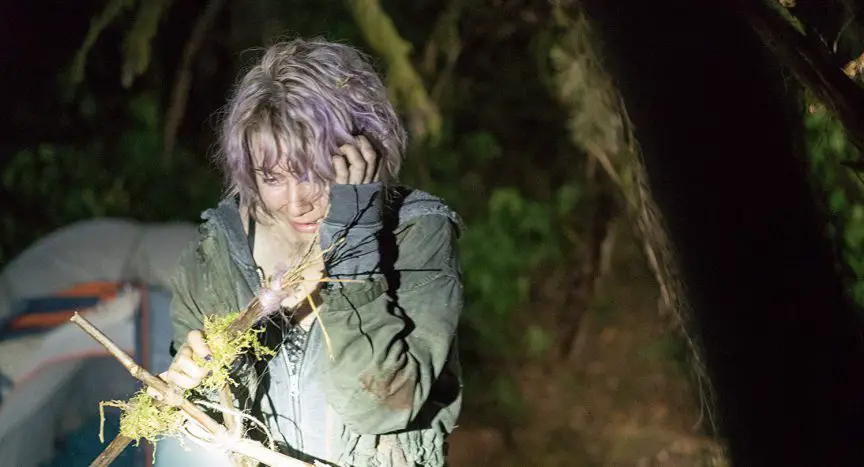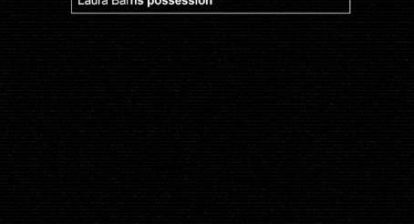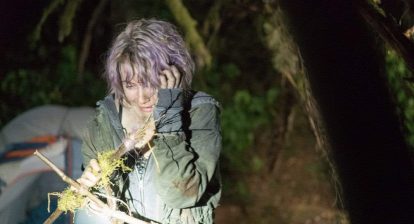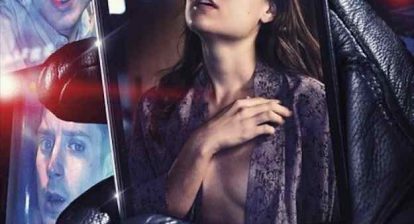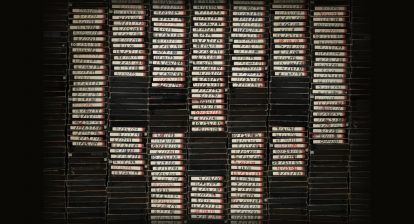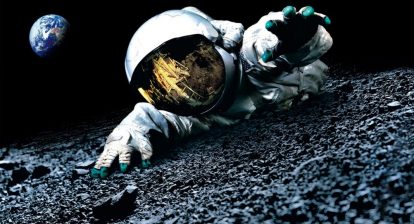The Blair Witch Project turns 20 this month, which means it’s the ideal time to point out that Blair Witch is the perfect sequel. There, I said it. The 2016 film, from horror super-duo Adam Wingard and Simon Barrett, which was made under a shroud of secrecy under the title The Woods and memorably revealed at Comic Con, is a labour of love from two guys who are as obsessed with the Blair Witch mythology as we are. So, why did everybody hate it so much?
Okay, it probably didn’t help that the first pull-quote many of us saw, from Brad Miska at Bloody Disgusting (also emblazoned on the BD, if you own it — and you should, it’s a fantastic package loaded with cool stuff including the hilariously candid commentary from Wingard and Barrett), declared Blair Witch as a new beginning for horror — nay, a game-changer for horror fans! Re-reading Miska’s review now, it’s clear he was excited about, and hugely enamoured with, the movie. But that quote got people’s backs up, no doubt, and it’s easy to understand why. Think back to how esteemed critics took issue with Hereditary being described as “this generation’s The Exorcist.” We’re in the same ballpark here.
The flick currently stands at 37 percent on Rotten Tomatoes, which is a complete joke, especially when you consider Paranormal Activity: The Marked Ones is at 39 percent. This film is considered among the worst dreck of the 2010s and it just isn’t. It doesn’t even come close. Some of us saw Devil’s Due, FFS. In a 2017 interview with Comic Book, Wingard and Barrett discussed how the timing was off, suggesting if Blair Witch had come out even a couple years earlier, the reaction might have been better. They also, notably, don’t consider their movie a remake or a reboot, and were careful to state it wasn’t an easy cash in for them either because, “The hardest thing that we could do was making a f**king found footage movie that was very straightforward.”
Related: Blair Witch (Shockingly) Has More Scares And Shocks Than The Original [Review]
Wingard has since fought even harder battles with his re-imagining of the beloved Death Note (which wasn’t terrible by any stretch of the imagination) but it’s clear this one was intensely personal to him and Barrett. The documentary accompanying the BD release of the movie showcases, to an almost painful extent, just how much work these two put into their Blair Witch. It’s worth noting, too, that Wingard and Barrett were the first choices of the original filmmakers to handle such delicate material.
They wanted to make a “relentless” and “pure” horror movie, building an impressive, 3-storey set for the house where much of the brilliant final act takes place, similar to the original film, even making holes to match those glimpsed in its predecessor. Everything is based on the core lore and mythology established in The Blair Witch Project, with the two making it clear that, although they didn’t want to show absolutely nothing again, what we do see definitely is not the witch. As Wingard notes, “What really makes it scary is you don’t know what’s out there.”
Working as both sound designer and composer, Wingard created soundscapes to layer in as the subtle, barely-there score, playing with a lot of real noises to give that genuine, trapped-in-the-forest feel. Blair Witch is an incredibly tactile movie, with Wingard adamant everything was done in camera, practically. The lesser-known cast of actors were given only “safe scripts” to read and weren’t even told what they were auditioning for at first. They stood behind the camera operators for that found footage effect during filming, and wore massive rigs on their heads whenever they were in the shot. Wes Robinson, who plays Lane, even shot most of his footage for real on the older Sony video-camera featured in the movie.
The sonic identities of the different cameras were very important. Hundreds of takes were captured, to ensure the actor and camera were always in concert with each other. Glitches were added to help the story feel more real, while additional footage was inter-spliced here and there to deliberately throw us off. Wingard and Barrett wanted to stick very closely to found footage rules, so it was important to put the actors in these situations as much as possible. They shot in the Vancouver wilderness, using only flashlights at night, where the actors confirmed it was genuinely frightening once darkness fell.

For Talia’s death, actress Valorie Curry was buried halfway underground with fake legs. Likewise, Callie Hernandez, who plays Lisa (the Ripley of the movie, as per Wingard, who told her to watch Alien to prepare for the role) is really crawling through those tiny, claustrophobic tunnels at the end. The space measured just one inch bigger than her shoulders, with even the cinematographer freaked out by how tight it was. As Corbin Reid, who played Ashley, attested, Blair Witch works because it plays “on primal fears.” Likewise Barrett agreed found footage “works best as POV horror.”
He and Wingard wanted to split the difference between the authenticity of The Blair Witch Project and making a film that actually looked good, with original co-director and writer Eduardo Sanchez noting their movie was still subtle in spite of its much larger scale. The final 30-40 minutes were edited like an action movie, which makes the intensity of the scares so much worse. Wingard and Barrett wanted different growls for each monster and every different type of scare possible to be featured throughout — not just the usual quiet-quiet-bang typical of found footage. As Sanchez himself intones in the documentary, Blair Witch was the sequel The Blair Witch Project deserved.
Watching it even now, just a few years after its release, makes it clear how much richer and more rewarding a horror movie experience it is than most of us gave it credit for. I remember being completely terrified seeing it in the cinema, from that first, spine-tingling glimpse of the new footage (so much scarier once you know who it actually is) to the crazy, relentless ending. The high-tech equipment, the GPS, the cellphones, it all reads like an answer to smart-ass horror fans — the kind who claim The Blair Witch Project sucks and has always sucked (you’re so creative, honey). Even with all this stuff, these modern kids, who are so careful to take every precaution, are still doomed.
Blair Witch builds on the mythos established in its predecessor by making the fact the group stays overnight in the woods what ultimately seals their fate. Likewise, the time loop is established when they awaken to discover it’s seemingly the afternoon and, later, Lisa finds a dishevelled Lane wandering around with a full beard. The addition of two locals, Lane and girlfriend Talia, is genius as it provides exposition via a super-nerdy and natural exchange of info. There’s no standing around explaining what’s happening, just these two dodgy weirdos (his screen-name is Darknet666; they have a confederate flag hanging in their house) gravely intoning “nobody comes out this way.” There’s also palpable tension between the deadly-serious locals and the skeptic outsiders.
When the two betray their new friends, the incident provides a great comparison between their too-perfect, homemade Blair Witch symbols and the terrifying real ones that appear later (one of which memorably acts as a voodoo doll, breaking Talia’s spine). The raw footage shot by Lisa looks decent because she’s a film school kid, but it still has that rickety, essentially found footage quality to it. The sound design is impeccable, so every bang and crash is LOUD. In the dark of the woods, anything moving is scary, even a tree falling down or some walkie talkie interference. Nothing much happens in the drone feed, for example, but the tension compels us to keep watching and waiting.
There are callbacks throughout, from Lisa’s shot of the car as they’re first entering the woods to the terrifying final moments, but Blair Witch is entirely its own, modern story. There’s no real score, outside of Wingard’s cleverly-deployed soundscapes, which we take for granted but must remember how important it is for establishing tension. The body horror aspect, with Ashley’s foot/leg, is gruesome and shot straight on with no cuts which, again, is rare. The moment when she crawls the tree to get the drone back will be considered an all-timer years from now (as will Lisa’s aforementioned climb through those gnarly tunnels). Likewise, characters getting grabbed and pulled off is another nice, modern addition that still fits the Blair Witch tradition.
Even the jump scares are on a hitherto unknown level of greatness, expertly executed so the big moment cannot be predicted, even by diehard horror fans. Blair Witch plays with audience expectations as the characters confusion intensifies, with Barrett and Wingard understanding that what’s barely glimpsed is more often scarier. The movie is consistently unnerving, lulling us into a false sense of security, alongside the group, once Lane and Talia are excommunicated. The piles of rocks and stick figures that eventually surround their little makeshift campsite are terrifying not just in number but because of how truly bizarre their presence is.
This is a movie clearly made by Blair Witch Project fanatics. Once it all kicks off proper, it doesn’t let up. Those final 30-40 minutes are faultless. The otherworldly shafts of light through the slats suggest a time lapse again while the haunted house setup itself is classic, devilishly employed to wrong-foot us at every turn (even after a few watches, I only spotted the hooded dude in the upstairs room this time around). Blair Witch is such a good looking film in general, and the painstaking detail in that house is second to none. Remember: it’s not the witch at the end but whatever it is is pretty bloody terrifying so who cares, just get in the damn corner.
See Also: Ten Found Footage Films that Redefined the Genre
Blair Witch‘s final moments mimic the original movie’s, with James’s apologies to Lisa recalling his sister, Heather’s, infamous speech 20 years previous. Crucially, though, it’s updated for a modern audience as Lisa is tricked into turning around (which, technically, is another callback). Every decision in this movie respects and pays homage to its predecessor while simultaneously staking a claim for this new story. There have been suggestions that Blair Witch would have played better under its original title, The Woods, but this is a Blair Witch story through and through.
Found footage has never reached the heights of The Blair Witch Project, but Blair Witch makes a compelling argument for how the sub-genre could be retooled for a modern audience. Miska may have been premature in suggesting it was a new beginning, but I’d wager this will become a fan favourite in years to come. It’s scary, intense, well-captured, performed, and lovingly put together, and, most importantly, it pays homage to what’s come before without being enslaved to it. Eduardo Sanchez was right; this is the Blair Witch sequel we deserved. Now we all just need to cop on and appreciate it.
